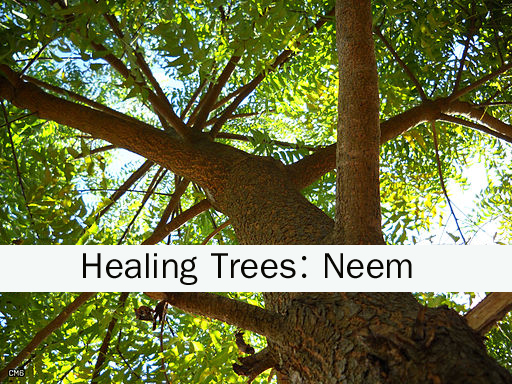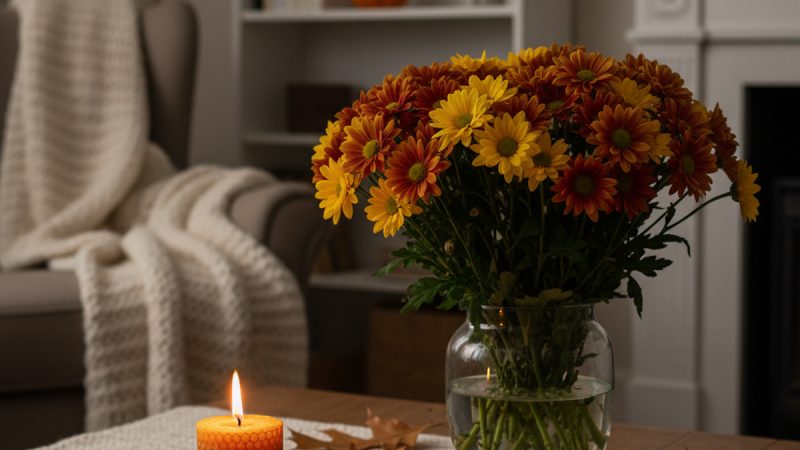Healing Trees for Ailing Man – Neem

Once upon a time in a village in India, there lived a farmer and his wife. The farmer decided to go to the nearby town, to try his luck. His wife did not want him to leave. So she sought advice from the sage who lived beside the village temple.
‘Do not stop him. But ask him to promise you this: each night, on his way to town he must sleep under a tamarind tree. But when he returns home, ask him to sleep at night under the neem tree.’ advised the sage.
The puzzled wife went home but asked her husband to do just as the sage had said. Next morning he left for the city.
In ten days the young man was back in the village. Surprised, the wife asked what had brought him back so soon.
‘It was illness’ he said.
‘The nearer I went to town, the worse I felt. When I reached town, my fever was so high I could not look for a job. And there was no one to care for me. So I decided to come home. Strangely, when I reached the village I got better. Town life is not for me.’
His wife smiled and remembered to take the sage a special meal that evening.
Indian Folktale
Indians believe that the neem air is health giving but that the tamarind tree exudes noxious vapors.
The neem tree takes little but gives a lot. It can grow in regions with poor soils and little rainfall and is found throughout subtropical Asia.
The earliest remains of neem, date to 2000 BC, in the ruins of the city of Mohenjo-Daro, North Pakistan. Ayurvedic medical texts mention it. When Buddhism traveled to Southeast Asia, the neem traveled with it – to Malaysia, Java and Bali. Later the Arabs traders took it back with them. They call it margosa.
Traditional Use
In Indian villages, the commonest use of neem twigs is as toothbrushes. The twigs are chewed and then rubbed on the teeth and tongue to clean them. It is antiseptic, anti fungal and very, very bitter to taste.
The cooked leaves are eaten to destroy intestinal worms and infections. The bitter curry is also supposed to stimulate appetite as it stimulates the liver to produce bile, hormones and folic acid. Mahatma Gandhi ate a dip of neem leaves. Every day!
A decoction of the leaves and twigs is used to bathe sufferers of skin diseases and in measles and chicken-pox. A more dilute solution is used as an eye-wash.
Neem seed is used as fodder. Crushed seeds and leaves are also used as pesticides. And dried neem leaves serve as mothballs in Indian cupboards and chests. In spite of this the neem is not poisonous to mammals. So it is safely used as an insect repellent in grain stores and cattle feed.
In East Java, the gum of neem is used for making paper glue.
Neem is a hardwood of the mahogany family. Not surprisingly, it is termite-proof. It was used to make furniture and tools before the advent of plywood and plastic.
Science Says
Neem is one of the most widely researched trees and hundred and thirty-five chemicals have been isolated. Its greatest popularity is as a pesticide.
Scientific tests by German researchers found the bark effective against oral and gum disease and its leaves reduce blood sugar levels.
It acts as a pesticide against almost 200 species of insects! Neem based pesticides are now produced commercially all over the world. The limonoid called azaridictin in neem oil is what insects seem to detest. Azaridictin is similar to insect hormones and disrupts their moulting cycle.
Present Use
To the Indian villagers, it is their neighborhood pharmacy. In India, Bangladesh and Pakistan neem oil is used to manufacture soap, toothpaste and skin ointments.
The seed contains 45% oil. Oral and topical contraceptives (birth-control) are made of neem oil for it has a strong spermicidal action. Recently it has been found that when neem is added to the fertilizer urea, it prevents soil denitrification.
A patent dispute some years ago brought it into limelight. In 1995 the pharmaceutical WR Grace patented a pesticide called Neemix. India called it bio-piracy for traditional medical knowledge cannot be patented. The Green Party of the European Union and an organization of Organic Agriculturists supported her claim. The patent was revoked after a ten years long battle.
WHO has called it ‘a tree for solving global problems’. It is now found in Brazil, Africa, even Southern China. 50 000 neem trees were planted near Mecca to control soil erosion and serve as a windbreak. In West Africa, it serves mainly as a fuel.
Pesticide, antiseptic, anti-fungal, anti-viral, preventive oral medicine, anti-diabetic and skin ointment – now that’s a pharmacy indeed! There are thousands of Indian, American and European websites selling, propagating and generally singing its praises. The common neem tree of the subcontinent’s back-garden has made it to fame.
This is part of a series on Healing trees. I wrote about some key trees of the world -trees important in their native regions. I am keen to publish it as I feel it provides a holistic view of the Man-Nature relation.
The Author:
Anupa Roy is a writer and information consultant. I write on varied subjects like architecture and alternative medicine, sustainability, etc. Nature-man relationships, and Young Adult fiction is what I most love to write and read. I work with children’s book collections and a school library and enjoy the challenge of bringing young readers and books together. As a technical writer/editor I have published in various magazines and written for corporate and websites. As an aspiring writer I have written historical fiction, nonfiction picture books, YA and other stuff.
Photo. Russavia








